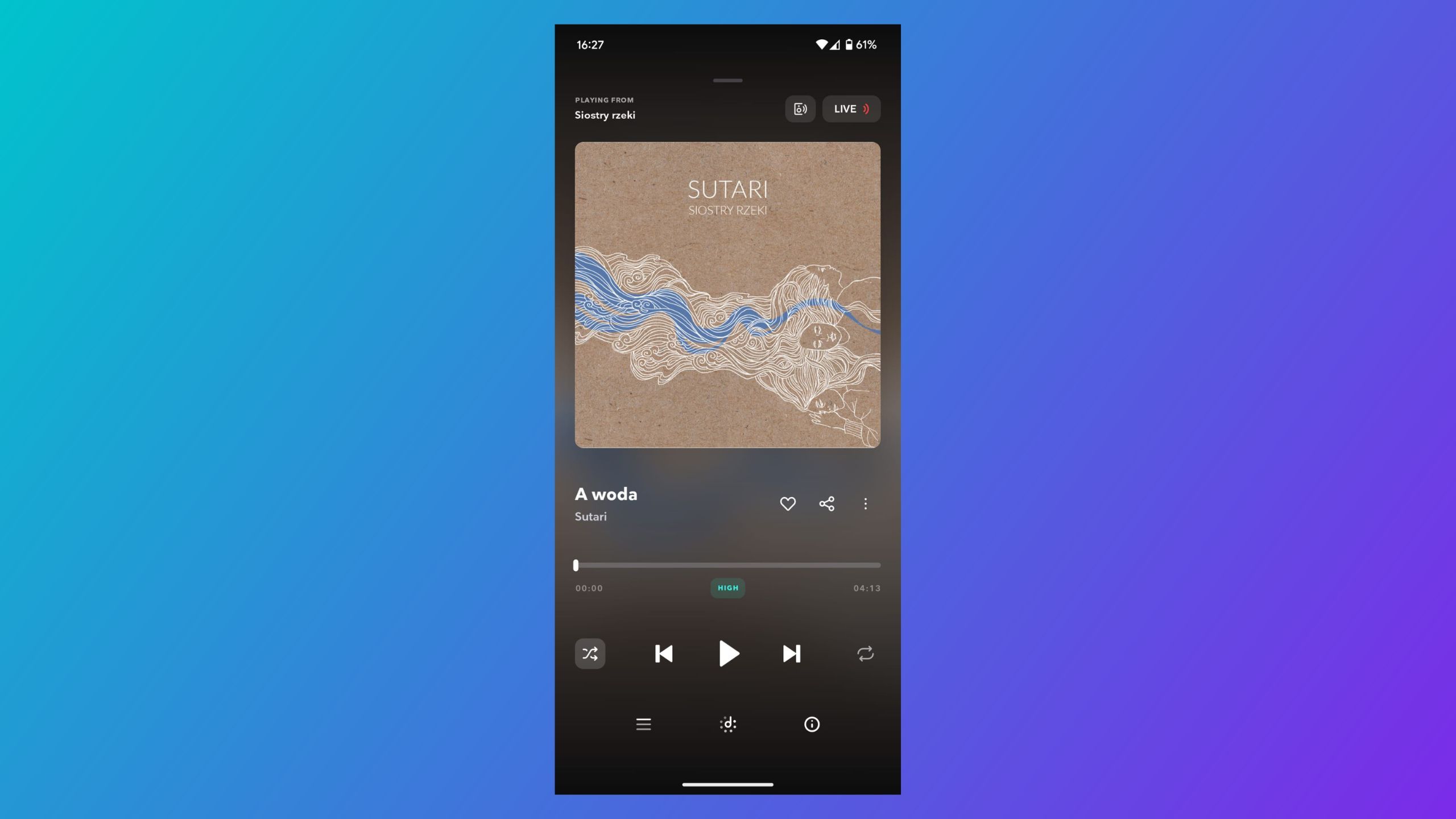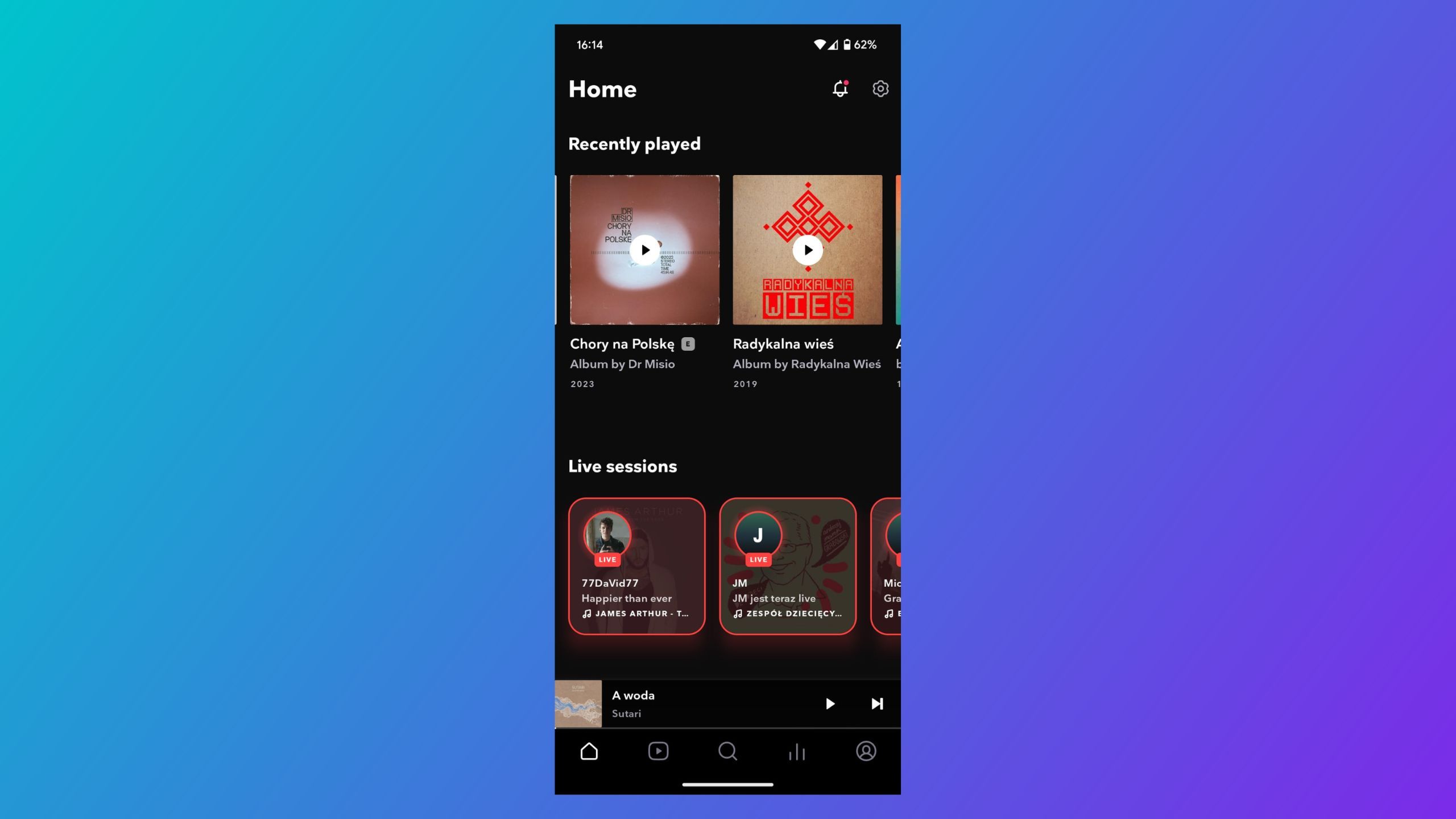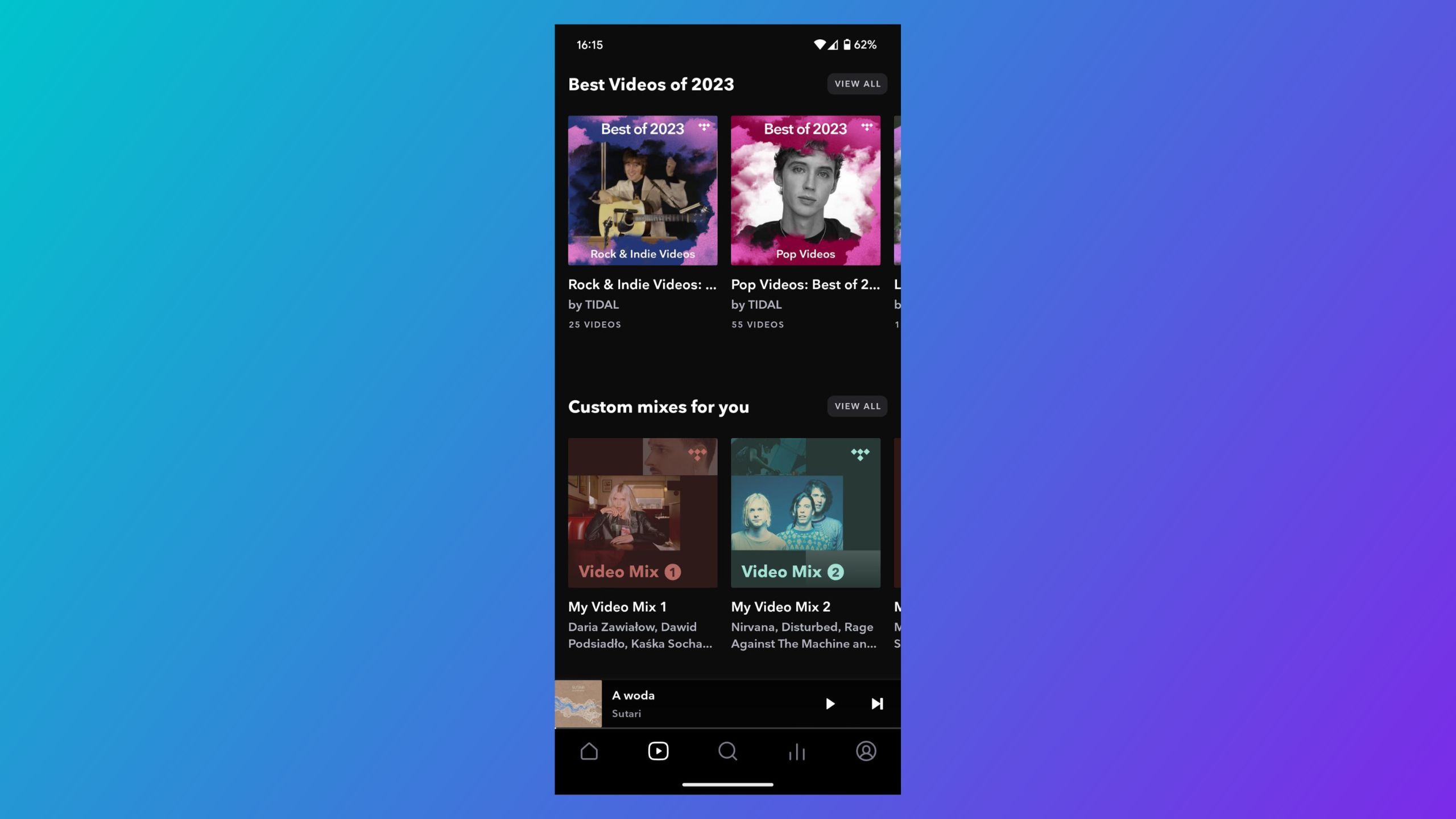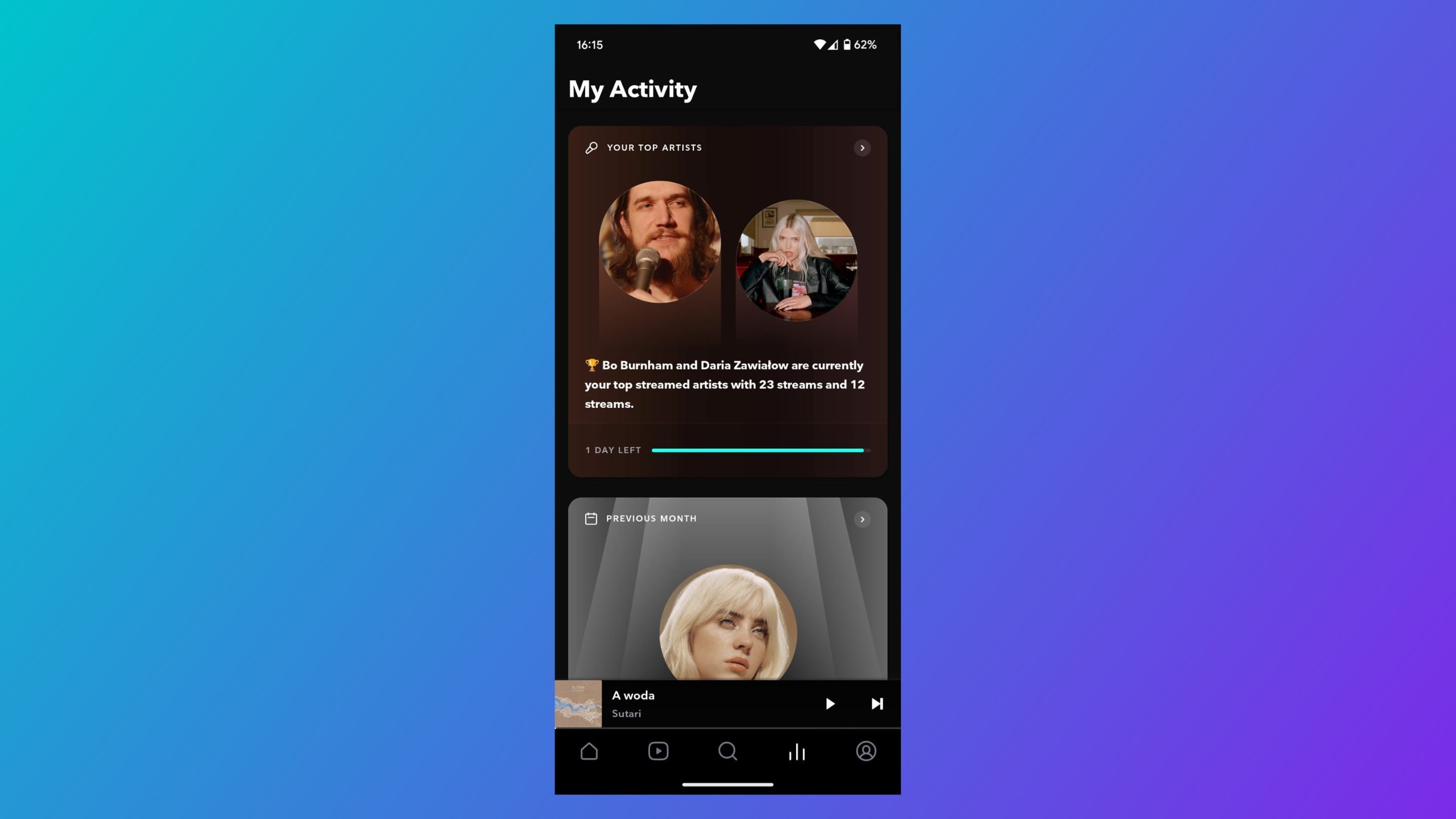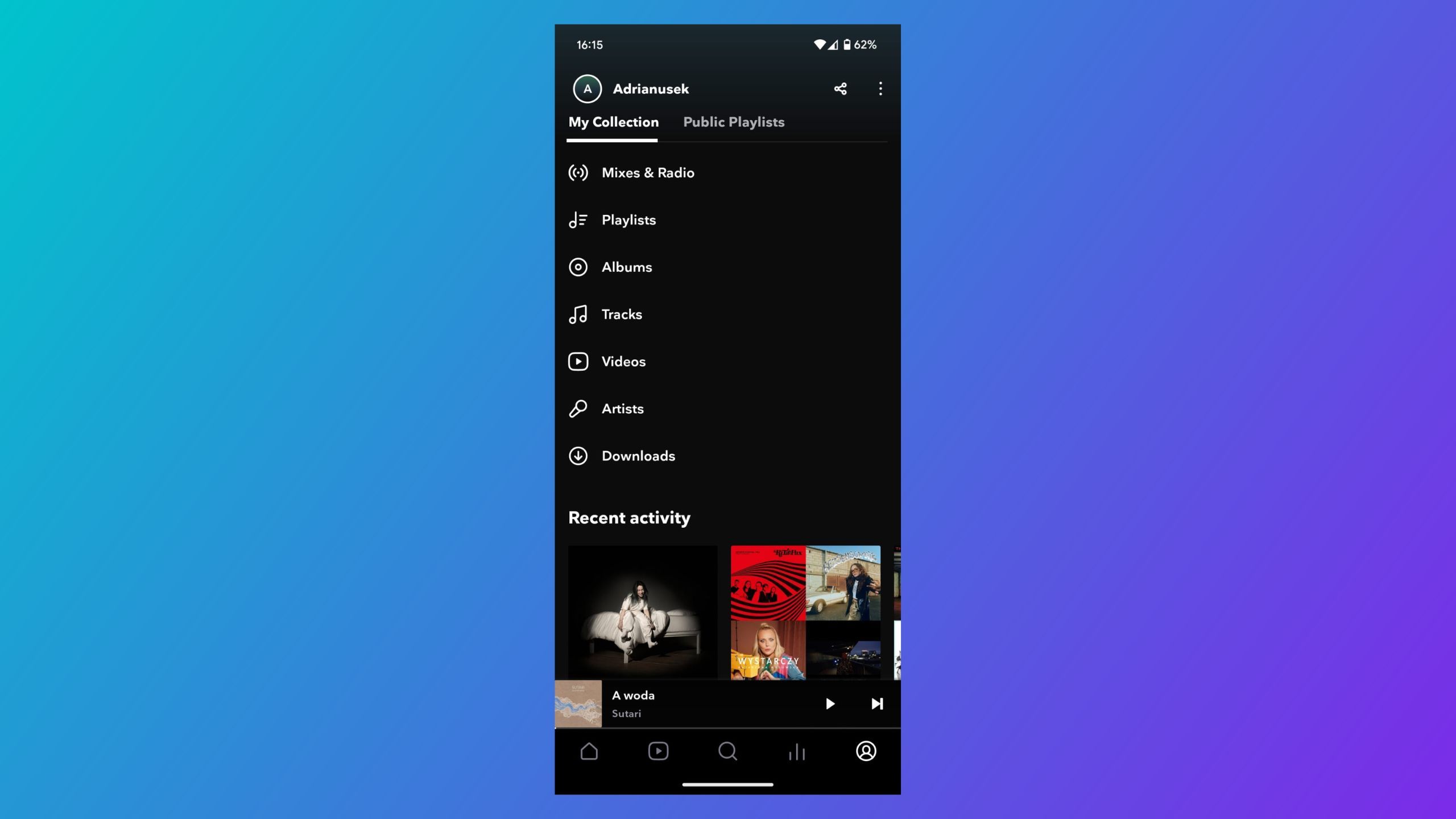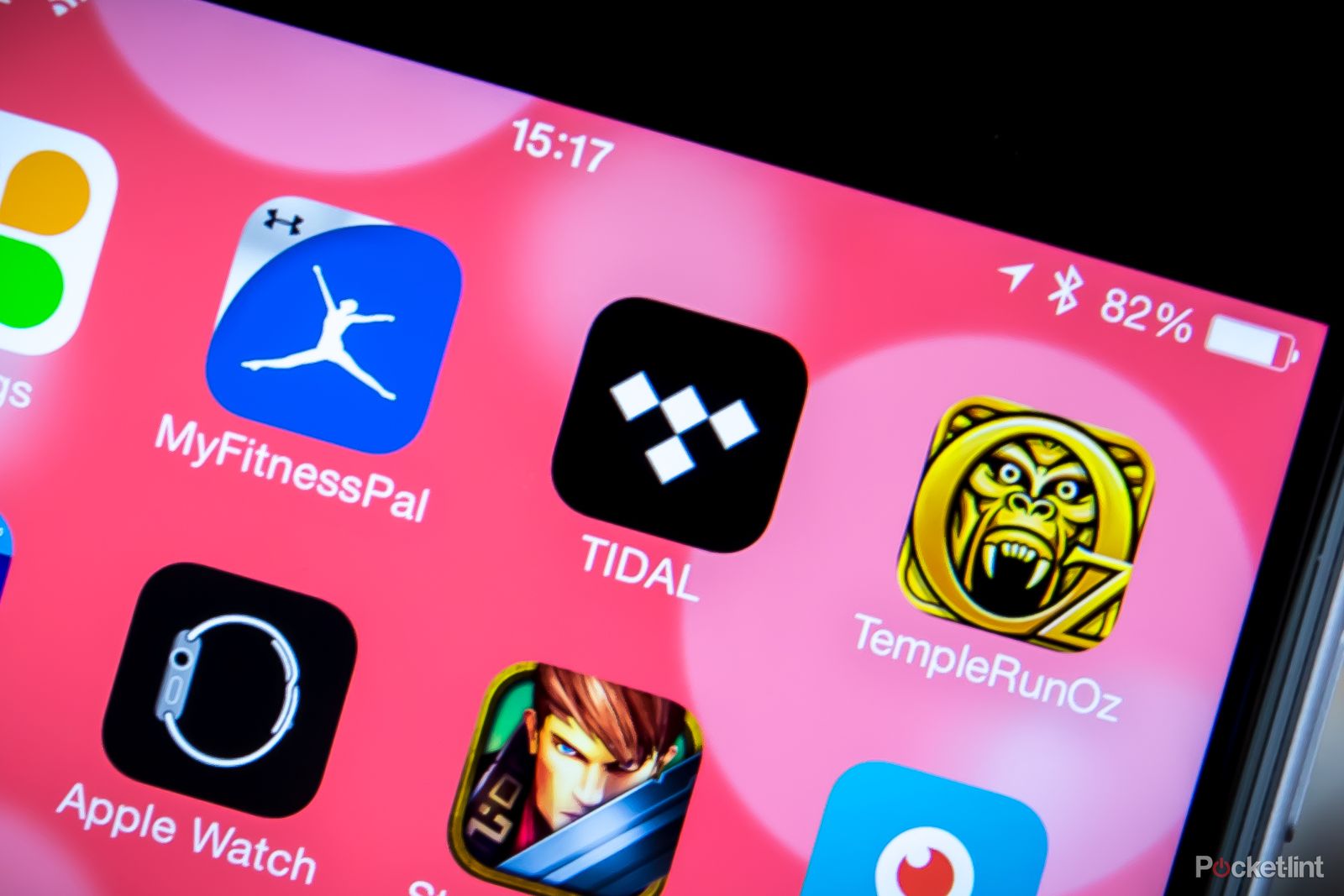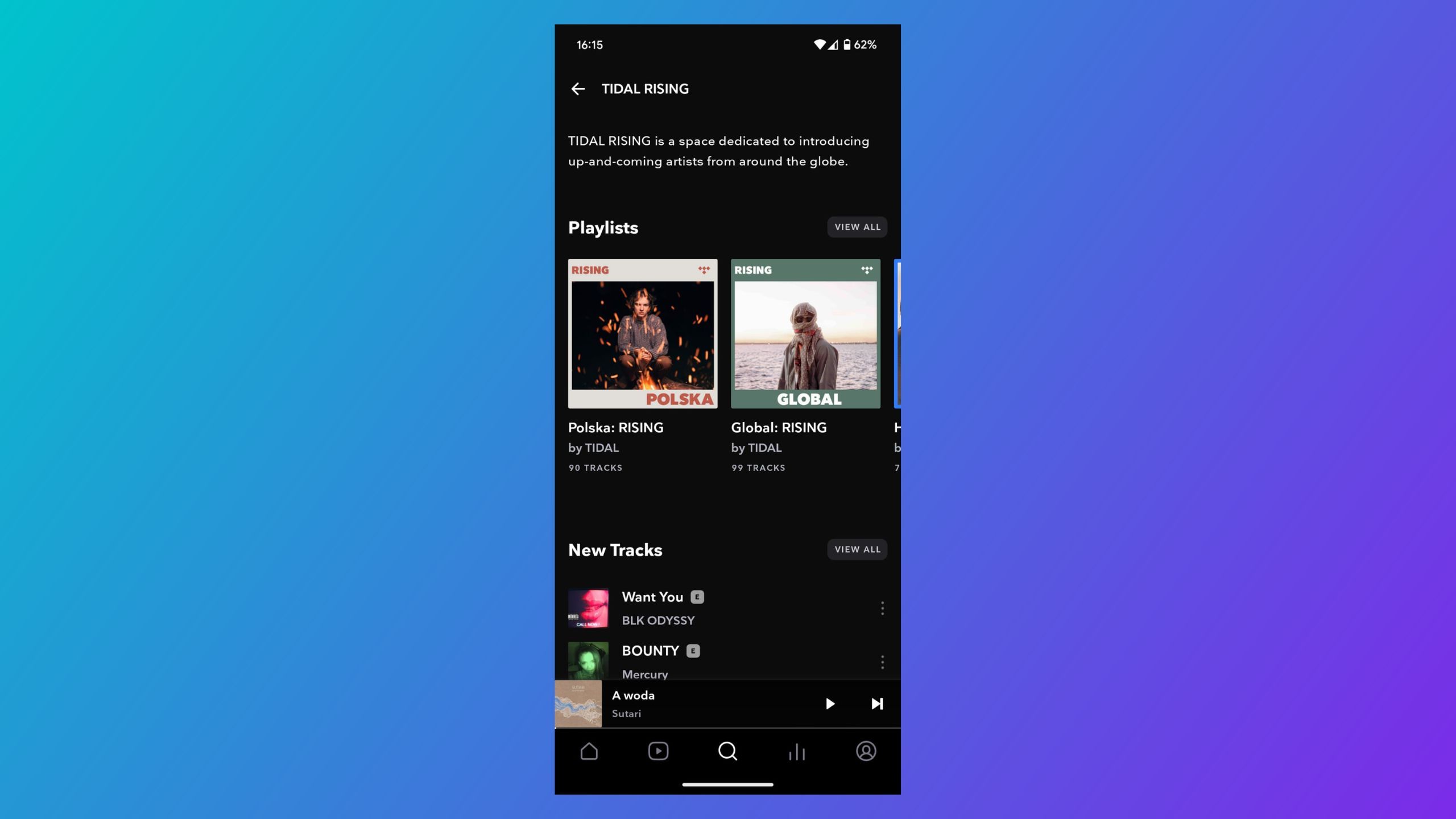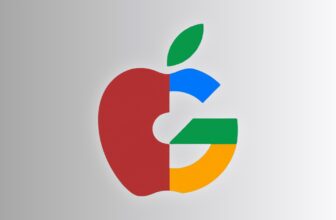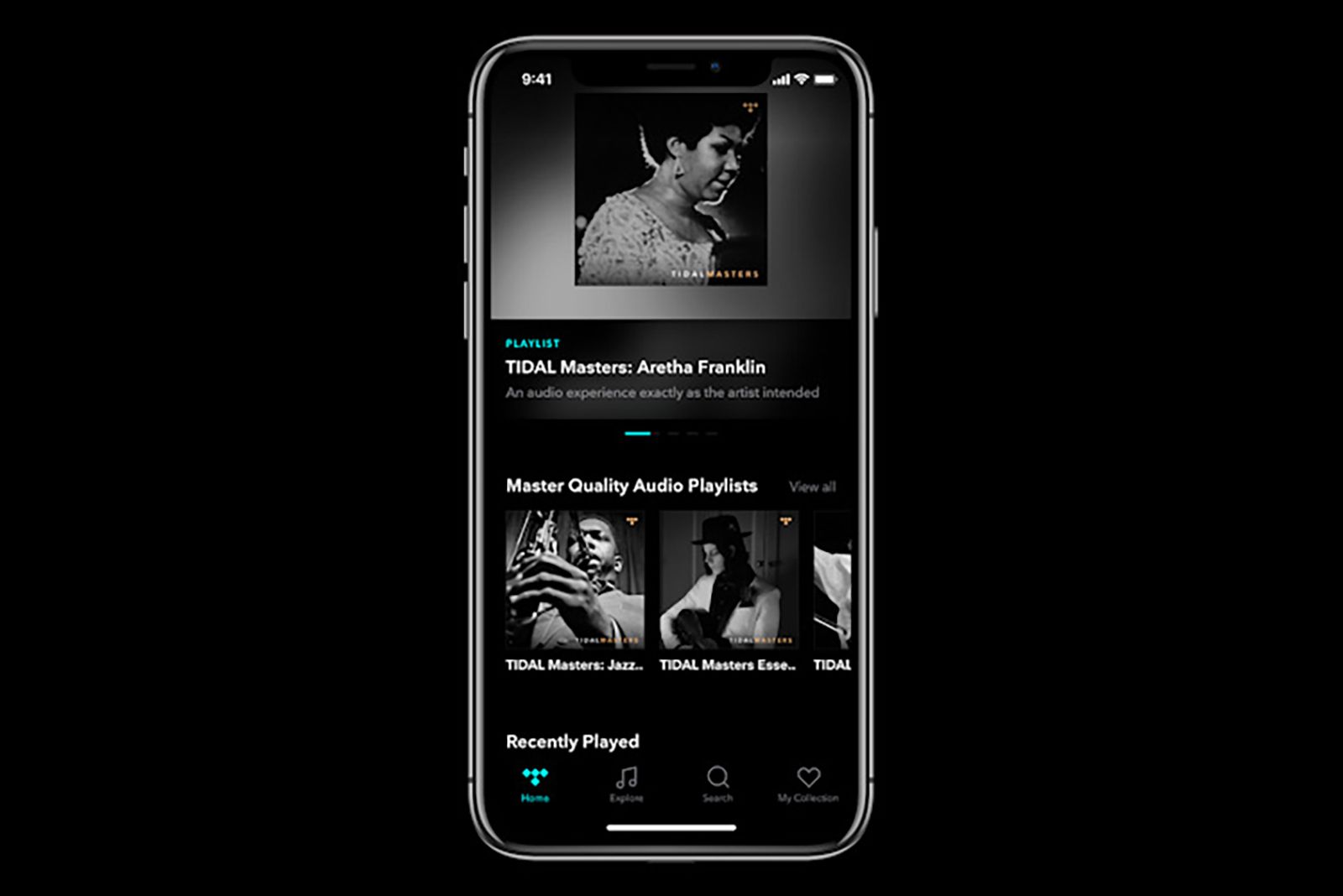
Key Takeaways
- Tidal differentiates itself by being artist-centric, paying artists more and focusing on high-quality recordings.
- Tidal offers extensive credits for music creators and allows you to search for specific contributors.
- Tidal has different subscription tiers, including one that offers lossless FLACs and high-quality audio, setting it apart from competitors.
Music streaming services nowadays are fabulous companions both for casual listeners and Hi-Fi enthusiasts. You can bring enormous catalogs of music with you everywhere, listening to the world-top-100, or obscure, experimental bands with 100 monthly listeners. The streaming world really is your oyster.
However, it’s not all sunshine and rainbows in the music streaming world. Spotify and Apple Music — the two biggest music streaming services — are well known not only for paying artists a pittance for their streams, but also for being generally difficult to work with and focused solely on profit, not artistry.
Apple Music tips and tricks: Get more from the music streaming service
Learn how to use Apple Music like a pro with these tips and tricks.
Fortunately, there are still streaming services that are trying to break this toxic pattern and support the artists that create the content you’re streaming daily. Tidal is probably the most well-known example. If you’re looking for a platform that not only hosts millions of songs from hundreds of thousands of artists, but also tries to pay them well and give you the best possible quality, Tidal is the way to go.
Even though the platform changed hands in 2021, the previous owners remained on the board of directors to make sure the platform remains on the artist-centric course. This means the artists are still fairly compensated, and you have access to the highest quality recordings available. In general, Tidal pays around 2-3 times more than Apple Music or Spotify per stream to the artists.
What’s more, Tidal offers an unprecedented level of insight into who and how created the music you’re listening to, providing extensive credits and the ability to search for all kinds of creators – from vocalists to the people who mix, record or write lyrics for them.
Tidal has a large focus on audio quality and offers three tiers of subscription, allowing you to access lossless FLACs and even 9216Kbps Master quality audio on the HiFi Plus plan. While Spotify still struggles to implement a Hi-Fi tier, Apple Music gives you the ability to stream Hi-res music files, but none of the streaming services offer music in such high quality as Lossless FLACs or MQA files that Tidal has in its library.
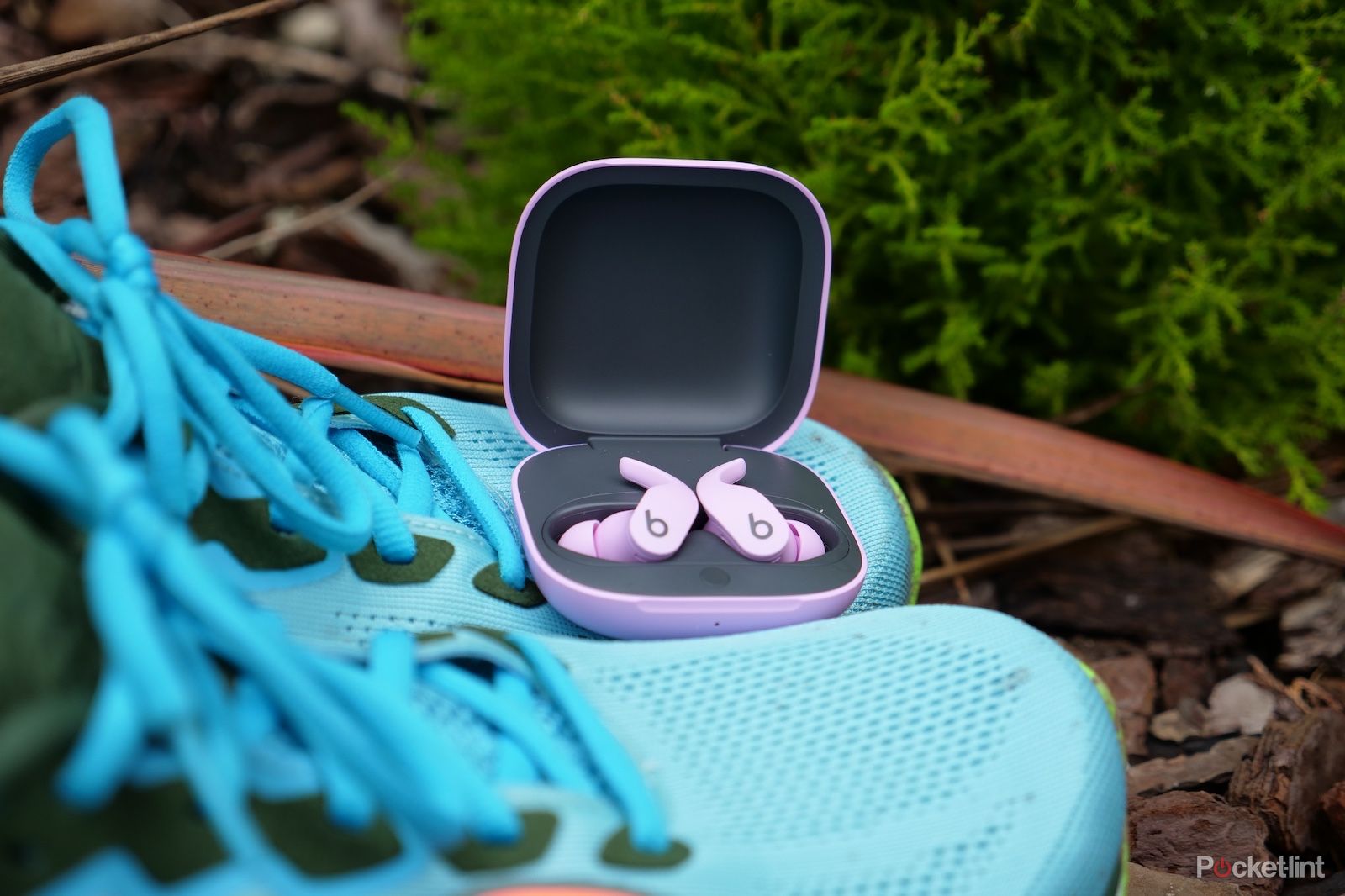
Best wireless earbuds: Get wire-free Bluetooth audio from these top earphones
These are the very best true wireless earbuds you can pick up right now, from the likes of Sony, Apple and Beats.
How does Tidal work?
Tidal offers a free tier in the US, but worldwide the platform only provides paid subscription tiers, without the free, ad-supported version. There’s still a free 30-day trial for new subscribers, so it’s easy enough to give it a whirl and see if it’s the platform for you. The Tidal app works with over 95 platforms, including Android, iOS and desktops as well as some cars and HiFi equipment.
Upon first launching the app, the service gives you a very intuitive way to select artists you like and with each one you select, more artists appear. It’s a very slick experience and only takes a few minutes.
Tidal then uses this data to curate playlists and suggest songs and artists you might enjoy, right from the get-go. Of course, you can search for music the old-fashioned way too. Tidal allows you to save your favorite playlists, albums and tracks, as well as download them for offline listening. You can also check out expertly curatec lists, such as tidal Rising, helping you explore new music and discover new, upcoming artists.
Navigating Tidal
Once you download the Tidal app and sign up, you will go through a tailoring process, which will ask you to select artists that you like. After you’ve moved through the simple process, you’ll find yourself on the home screen. Here you will be presented with a selection of music Tidal thinks you will enjoy based on your earlier selections, and after using the app for a while, based on your listening habits too.
There is a menu bar at the bottom of the screen for navigation (on the mobile app) to different sections of Tidal. There are five screen tabs in the menu bar:
Home: This page is loaded with suggestions of music that Tidal thinks you’ll like, in the form of playlists, radio stations, new tracks and charts.
Videos: Presents you with featured videos from Tidal’s network as well as video playlists catered to your tastes. You can also access Album experiences here, which are essentially Director’s Commentary but for albums. There’s even some full length movies here, mostly of the music documentary variety.
Explore: The explore tab allows you to search for a specific song, artist or genre. It also allows you to browse music that’s suited to moods, activities, events and more.
My Activity: Listing your top artist and what you’re contributing to that artist from your HiFi Plus subsciption.
My Collection: Every time you favourite a song, album, video or playlist, it gets added to your collection under Mixes, Playlists, Artists, Albums or Tracks. You can also find your downloaded tracks and recent activity here, as well as access to the settings.
These sections are generally reflected in the desktop app too, based around a left-hand menu.
There are a couple of additional buttons to pay attention to. The first tells you the quality of the stream. It will normally say “Normal” or “Master” (depending on your subscription), but click on this and you can change the quality. The mobile app also has options to change the quality of Wi-Fi and cellular data – to save from being hit with a huge streaming bill.
The second interesting button is the output Tidal is using. This is a speaker icon and on a desktop device will let you select from outputs you have at your disposal on your system – this might include your PC speakers, an external DAC or various headphone sockets. It also includes casting to send to a Google Cast compatible device – this option is also in the mobile app.
Tidal
How much does Tidal cost?
You can see how much Tidal costs here. There are four subscription plans available: HiFi, HiFi Plus, HiFi Family and HiFi Family Plus. OF course, in the US only, you can also use tidal for free, but that means limiting yourself to an ad-supported experience with limited music quality.
HiFi
The HiFi plan offers CD quality audio at up to 1411Kbps. It also gives you access to Tidal Connect, offline listening on mobile devices and is, of course, ad free. The HiFi plan costs $10.99 per month.
HiFi Family
The HiFi family plan offers you exactly the same benefits as the HiFi plan, but you can enjoy your music on up to 6 devices. What’s more, you can also set up some devices to have access only to clean content if you want your children to have restricted access to explicit lyrics. The HiFi Family plan costs $16.99 per month.
HiFi Plus
HiFi Plus gives you everything HiFi offers, as well as access to Master Quality Audio and lossless FLAC recordings, and innovative spatial formats like Dolby Atmos and Sony 360 reality audio. HiFi plus costs $/£19.99 per month.
HiFi Plus Family
HiFi Plus Family subscription tier offers the same benefits as the HiFi Plus version, with the added bonus of being able to stream music on 6 concurrent devices. It costs $29.99/month.
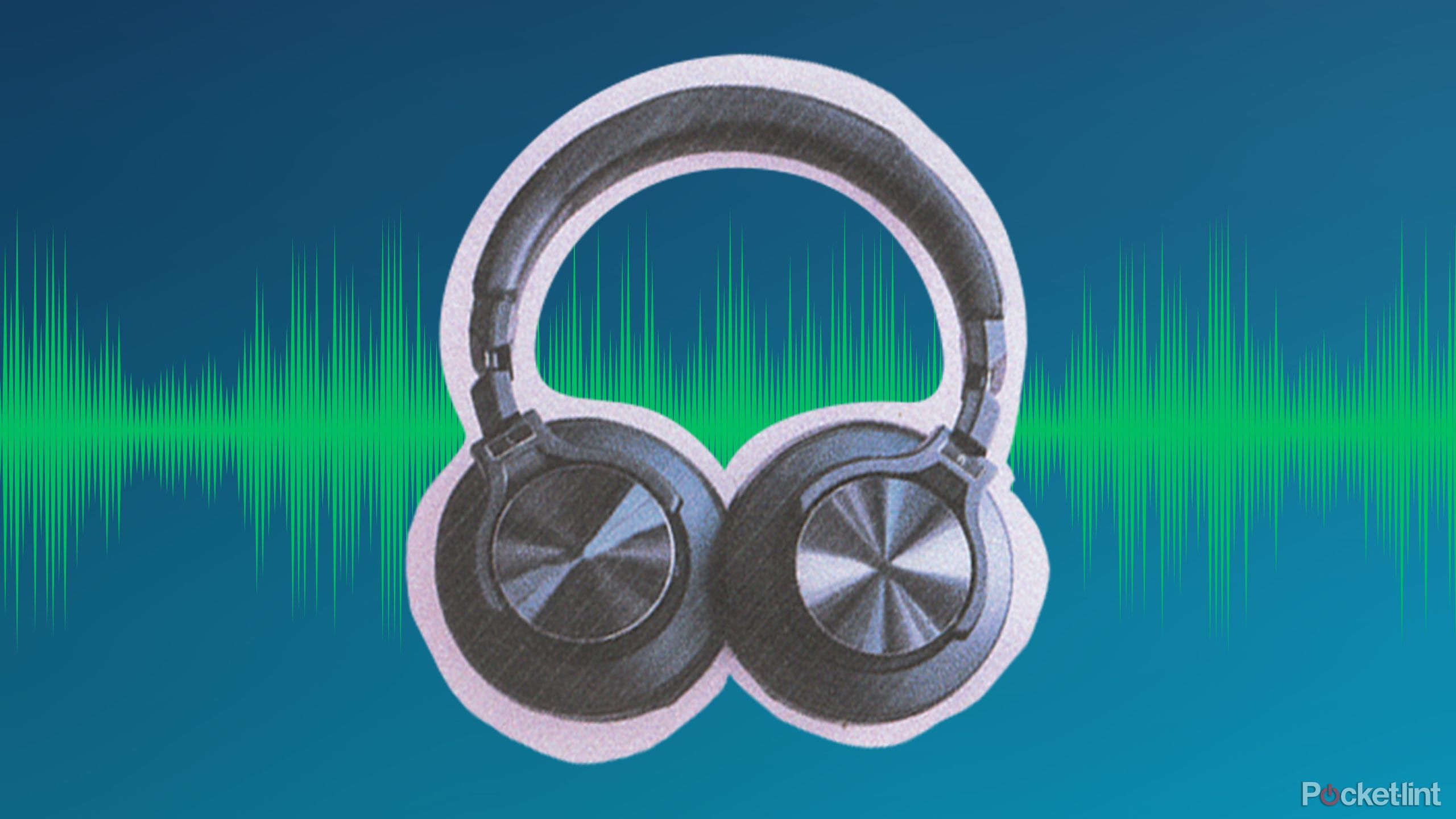
7 Spotify tricks for getting out of a music funk
Stuck in a constant playlist shuffle? Sick of playing the same songs on repeat? Here are my favorite Spotify features to mix up your sound.
What are the best alternatives to Tidal?
Alternatives include: Spotify, YouTube Music, Amazon Music Unlimited, and Apple Music. Each of these services allow you to not only stream music but also download and listen offline.
Even though Tidal, just like Spotify, Apple Music, or Amazon Music Unlimited, is generally a music streaming service, it differs from all of these quite a lot. The source of differences stems from the beginnings of Tidal, as the platform was launched by a company founded by Jay-Z and Beyoncé as an artist-centric service, which does not only reward them fairly for their work, but also cares about the quality of recordings that are available to stream.
None of the rival services offer such insight into how your subscription helps the artists you love, so if that’s high on your priorities, Tidal is a very compelling choice. It must be said that none offer quite the same audio fidelity as Tidal’s Master recordings either, Amazon Music Unlimited and Deezer come pretty close though.
Should you try Tidal over Spotify or Apple Music?
Choosing Tidal over Spotify or Apple Music can be appealing for a couple of key reasons.
First, Tidal stands out with its high-fidelity audio quality, offering lossless FLAC and Master Quality Authenticated (MQA) tracks that audiophiles or anyone seeking the best sound experience will appreciate. Neither Spotify nor Apple Music currently matches this level of audio fidelity in their standard offerings, although Spotify has announced plans for a HiFi tier.
Additionally, Tidal’s artist-friendly approach, which includes higher compensation rates and direct payments to artists based on user streaming data, presents a more ethical choice for those looking to support musicians more directly.
|
Feature |
Tidal |
Spotify |
Apple Music |
|---|---|---|---|
|
Audio Quality |
|
|
|
|
Artist Compensation |
|
|
|
|
Music Library |
Over 80 million songs, extensive credits for music creators. |
Over 70 million songs, including podcasts and audiobooks. |
Over 100 million songs, includes music videos and lyrics integration. |
|
Subscription Tiers |
|
|
|
|
Free Tier |
Limited free tier in the US. |
Ad-supported free access. |
No free tier, only a 1-month free trial. |
|
Exclusive Content |
Curated playlists, high-quality videos, Tidal Rising for new artists. |
Exclusive podcasts, personalized playlists. |
Exclusive releases, Apple Music 1 radio. |
|
Pros |
Superior audio quality, fair artist compensation, extensive music credits. |
Extensive library, excellent discovery tools, free tier available. |
Lossless audio, Spatial Audio, integration with Apple ecosystem. |
|
Cons |
Higher cost for premium audio quality, less emphasis on podcasts. |
Lower audio quality compared to Tidal, struggles with artist payouts. |
No free tier, limited non-Apple device integration. |
More Tidal FAQs
Q. Which devices support Tidal?
The Tidal music service has a wide range of support on third-party sound systems, such as Sono and Denon Home. Tidal can be added as a streaming music source within the dedicated apps for these systems, ensuring that audiophiles get the best possible codecs pumping through their speakers.
Tidal also has a feature similar to Chromecast and AirPlay, called Tidal Connect. Using the Tidal app as a controller, you can select supported speakers for playback, and it will send the highest-quality stream possible, whether it’s FLAC, Master audio, or even Sony 360 Reality Audio and Dolby Atmos.
A full list of supported systems and devices can be found here.
Q. Where is Tidal available?
Tidal is currently available in 61 countries, and it plans to continue increasing this number. Most of Europe, North and South America and Australia are covered, but if you want to check the full list, it can be found here.
Q. How to change or cancel your Tidal subscription
If you decide to upgrade or that you no longer want to be a Tidal subscriber, the process is pretty straightforward.
- Go to tidal.com and log into your account.
- Once logged in, hover your cursor over My Account in the top right corner.
- From the pop-up menu, choose Manage Account.
- On the account management screen, scroll down to Your Subscription menu.
- Click Your Subscription button.
- If you want to upgrade your plan to HiFi Plus, click the Upgrade to HiFi Plus button.
- If you want to manage your subscription in any other way – like add a Family plan – click on the Change Plan button.
- If you want to cancel your subscription, click the Cancel subscription button under your billing information.
Credit : Source Post
